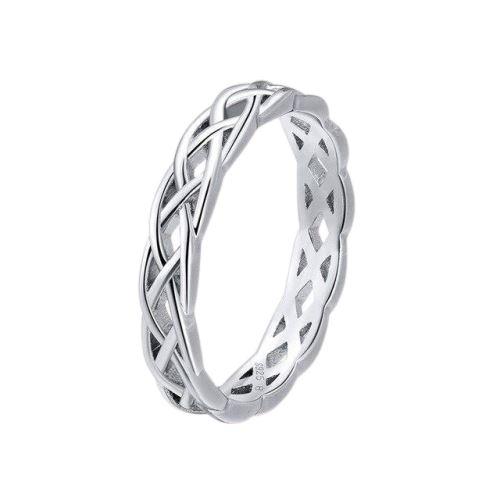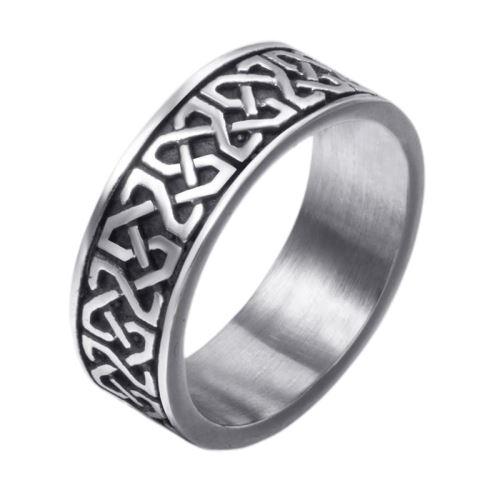Understanding the Endless Knot: Symbol of Eternity and Infinity
Endless knot, lucky diagram, glorious or eternal knot : this symbol has many names that you have probably already heard.
It is in fact one of the oldest, several thousand years old, and recognized by cultures from all over the world.
While most Asians associate the endless knot with Buddhism, Tibetans have a somewhat different view. For the ancient Celts, the endless knot also carried significance. And the vision of this symbol by Feng Shui practitioners is also unique.
In short, let's discover together everything there is to know about the endless knot, this powerful symbol and, as you will see, with astonishing powers.
Contents :
Nagas and endless knot: a shield against demons

The endless knot in Buddhism
Buddhist tradition knows the endless knot by many names. “Knot of eternity”, “Infinite knot”, “Glorious knot”: all these qualifiers can be contained in a single word, “ Shrivasta ”.
The concept of "Shrivasta" describes something of a complex entanglement, with neither beginning nor end discernible, and which expands into eternity. In fact, more than eternity, Shrivasta develops outside of time. To learn more about it, here is the Wikipedia page that talks about Shrivatsa.
You should know that the endless knot is seen as a powerful Buddhist lucky charm. In addition to the traditional Buddha statues, practitioners of this philosophy use eight symbols known as the "eight auspicious signs" (or Ashtamangala). The endless knot is one of them.
The meanings of this symbol are therefore very numerous in Buddhism, and here are some of them:
- Often, this particular symbol will be used to symbolize the offerings of wisdom that Shakyamuni Buddha received when he achieved enlightenment.
- Through its link with eternity, the endless knot expresses the infinite continuum, the great cycle of death and birth.
- Sometimes also, it is used to represent the interconnectedness in all things, the bond that unites us all to each other.
- The endless knot is a powerful symbol of the Buddha's infinite benevolence towards his disciples.

The precepts of the Buddha
by Buddhist jewelry and lucky charms
Nagas and endless knot: a shield against demons
Hindu and Buddhist mythologies know strange creatures known as “ naga ”. Nagas are a kind of deity (sometimes protective and sometimes malevolent) who live underground, often in underground waterways. In fact, their kingdom is invisible, except to a few wise people who, through work on their third eye, know how to discern what cannot be seen.
If some nagas are “protectors of the Dharma”, a kind of spiritual guardians of Buddhist teachings, others are real demons who take pleasure in human suffering.
There is a wonderful tool to counter this second category: the endless knot.
Indeed, through its link with the goodness of the Buddha, this protective symbol will remind the naga of their primary mission and, if they had wanted to harm you, their intention would become that of a teacher.
Indian culture therefore invites you to wear an endless knot on your person (in the form of a cord or, why not, in the form of jewelry), particularly for people working underground or near waterways.

A Tibetan knot?
In works of art, temple architecture or pieces of jewelry: if you ever visit Tibet, you can find the endless knot everywhere.
A fun tradition is also that greeting cards with such bows are exchanged on New Year's Day. Apparently, this would create a karmic bond between the giver and the recipient, which would bind their destiny in luck and happiness for the coming year.
If most Buddhists speak of “Shrivasta” to designate our knot, Tibetans instead use the term “ Palbeu ”. If the word used changes, the meaning also has some variations.
In Tibetan Buddhism, the knot of infinity symbolizes the union of infinite compassion and wisdom. Infinite, yes, because both are immense and therefore extract themselves from notions of time.
These two ideals are often represented by two deities and their sacred union. Lakshmi is the goddess of fortune and abundance. Wisdom being a form of abundance, Lakshmi also allows us to achieve it. Vishnu is the protector god, the one who guards Brahma's creation and allows Shiva to destroy when necessary. Without protection, there is no compassion: Vishnu therefore makes it possible to achieve this quality.
Through the Tibetan knot, it is their sacred union that is shown, their union which helps in the creation of an abundant life which, protected, can develop and grow.

The endless knot in Celtic tradition
We told you: our lucky symbol is not only known in Asia, far from it. We find traces of it in the Roman or Byzantine empires, to name but a few.
The Celtic civilization also greatly appreciated knots. Lovers' knot, sailor's knot or Celtic shield are just a few examples, but there are lots of others.
While the concept of Shrivasta is particular to Asian culture, a strikingly similar symbol existed in ancient Europe, known as the " Knot of Dara. " In the Celtic language, “dara” means oak and, when we know the importance this tree had for the Druids, we understand the importance of our knot. No doubt: such a ring with an endless knot would have pleased the Gallic druids!
In particular, it was said that like the sap of the king of the forest, the interconnected lines of the knot of Dara came from the world of the gods. A true link with the other world, the endless knot of the Celts was undoubtedly more magical than simply symbolic...
Modern esotericists have also put forward the idea that this symbol could represent the perfect balance between the two hemispheres of our brain. It is true that by its shape, this Celtic knot can resemble a top view of our gray matter. Neural interconnection, balance of the various facets of the human… But what could the Celts have discovered?

Feng Shui's vision of this node
Feng Shui is a philosophy based on the analysis of energy flows and how they can affect our lives. Very practical, this Chinese doctrine seeks to create a harmonious environment where humans can live and develop peacefully.
With this in mind, the endless knot is a great ally.
In Feng Shui, this lucky symbol represents a kind of balanced flow, that of positive energy which knows how to navigate without discontinuity. In summary, it represents the very purpose of Feng Shui.
Nothing is worse in decorating than too many corners, angles or breaks. This prevents the Chi from circulating properly, and thus causes misfortune and suffering. With the endless knot, there are none. In the same vein, here are some Feng Shui tips from the site journaldesfemmes.fr.
More broadly, this knot is seen as a “ Feng Shui remedy ”, a powerful good luck charm whose simple presence brings greater abundance and repels negativity. Feng Shui teaches us that rubbing an endless knot drives away everything dark and brings stability to the soul.
You will therefore find in China many pendants, rings and amulets representing the endless knot. Whether it is a search for protection, prosperity or joy, the reasons for wearing them seem numerous in any case.
Lucky charm featured in this article

Celtic Infinity Knot Ring
See more
Celtic Endless Knot Ring
See more
